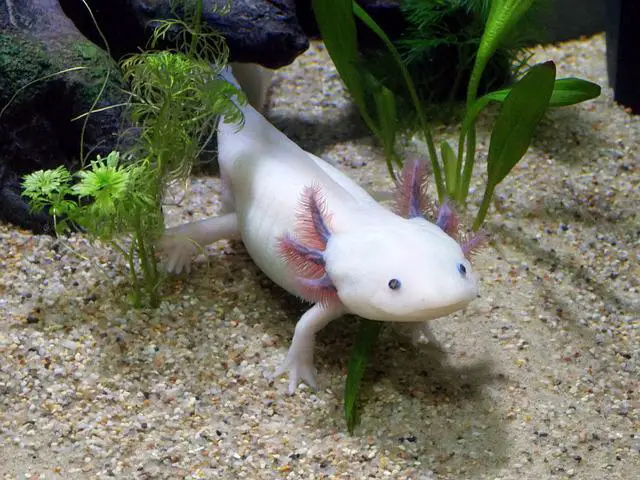When it comes to axolotls, there are a lot of myths and misconceptions floating around. One of the most common is that these creatures need air to breathe. In this blog post, we will explore whether or not axolotls require air and debunk some of the myths surrounding them.
Introduction
Do axolotls need air? No, they don’t need air to survive. In fact, they can live their entire lives underwater.
Axolotls are a type of salamander that has adapted to living in aquatic environments.
They have special cells in their skin that help them absorb oxygen from the water, and they don’t have to come to the surface to breathe.
However, even though they don’t need air to live, axolotls will still sometimes rise to the surface and take a gulp of air.
This helps them stay healthy and prevents their skin from getting too dry. So, even though axolotls don’t need air to survive, it’s still important for them to get some every now and then.
Do axolotls need air?
One question that has been debated is whether axolotls need to breathe air as humans do. The answer appears to be both yes and no. In the wild, axolotls typically live in water that is well-oxygenated, and they do surface occasionally to gulp air.
However, they can also survive in water with very low oxygen levels for long periods of time by absorbing oxygen through their skin.
In captivity, axolotls typically have access to air but do not seem to need it as long as the water is well-oxygenated.
Ultimately, whether or not axolotls need air appears to depend on the surrounding conditions. When oxygen levels are low, they are able to adapt and absorb oxygen through their skin. However, in environments where oxygen is plentiful, they will take advantage of it by surfacing and gulping air.
Do axolotls have lungs and gills?
In their natural habitat, axolotls typically live in water that is low in oxygen. As a result, they rely on their gills for respiration.
However, if the water quality deteriorates or the temperature becomes too warm, axolotls will start to develop lungs.
These accessory lungs allow them to survive in environments that would otherwise be uninhabitable.
Although axolotls can technically survive without their gills, they are often lost during the transition to land-dwelling. For this reason, many axolotl enthusiasts believe that it is best to keep them in an aquatic environment.
What Science has said
Scientists have long been interested in the effects of air deprivation on animals, but conducting experiments on live animals can be both ethically and logistically challenging.
This is particularly true for axolotls, a species of aquatic salamander that can regenerate lost body parts.
Fortunately, scientists have found a way to study the effects of air deprivation on axolotls without killing them in the process. By using a technique called microCT scanning, researchers can obtain high-resolution images of axolotl lungs without having to sacrifice the animals.
This allows for a non-invasive study of the effects of air deprivation on lung development and regeneration. In addition, microCT scanning can be used to study other organs and tissues, making it a valuable tool for investigating the effects of a variety of different environmental factors on axolotl health.
What research has found
Extended periods of air deprivation can have a number of negative effects on axolotls’ health and behavior.
Studies have shown that axolotls subjected to air deprivation for prolonged periods of time tend to be less active and have a lower metabolic rate.
They also tend to lose weight, and their immune system may be compromised. In addition, air deprivation can cause changes in the way axolotls process calcium, which can lead to problems with bone development.
Finally, extended periods of air deprivation can be stressful for axolotls and may lead to behavioral changes such as increased aggression.
Researchers are still working to understand all of the potential long-term effects of air deprivation on axolotls, but it is clear that it can have a significant impact on their health and well-being.
What implications could this research have
The study of the effects of microplastics on aquatic creatures is still in its early stages, but the implications of this research could be far-reaching.
Although the focus of this study has been on fish, it is possible that other aquatic creatures are also affected by microplastics. In addition, given that fish are a major source of food for humans, there is a possibility that microplastics could transfer from fish to people.
This could have serious implications for human health, and further research is needed to understand the risks involved. In the meantime, it is important to be mindful of the amount of plastic waste that ends up in our oceans and rivers. By taking steps to reduce our reliance on plastic, we can help to protect our aquatic ecosystems – and ourselves – from the harmful effects of microplastics.
Conclusion
In conclusion, axolotls do not need air to survive. They are capable of breathing through their skin, which is highly permeable to oxygen. As a result, they can live and thrive in water that is low in dissolved oxygen. This ability makes them well-suited to life in aquaria and other enclosed aquatic habitats. While they do occasionally surface to take a gulp of air, this is more for purposes of buoyancy control than for respiration. In short, axolotls are true aquatic creatures that do not require air to live.




